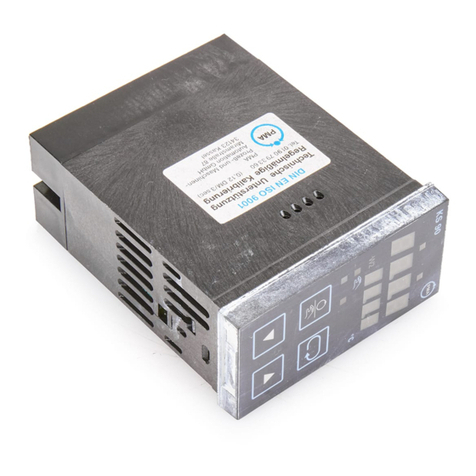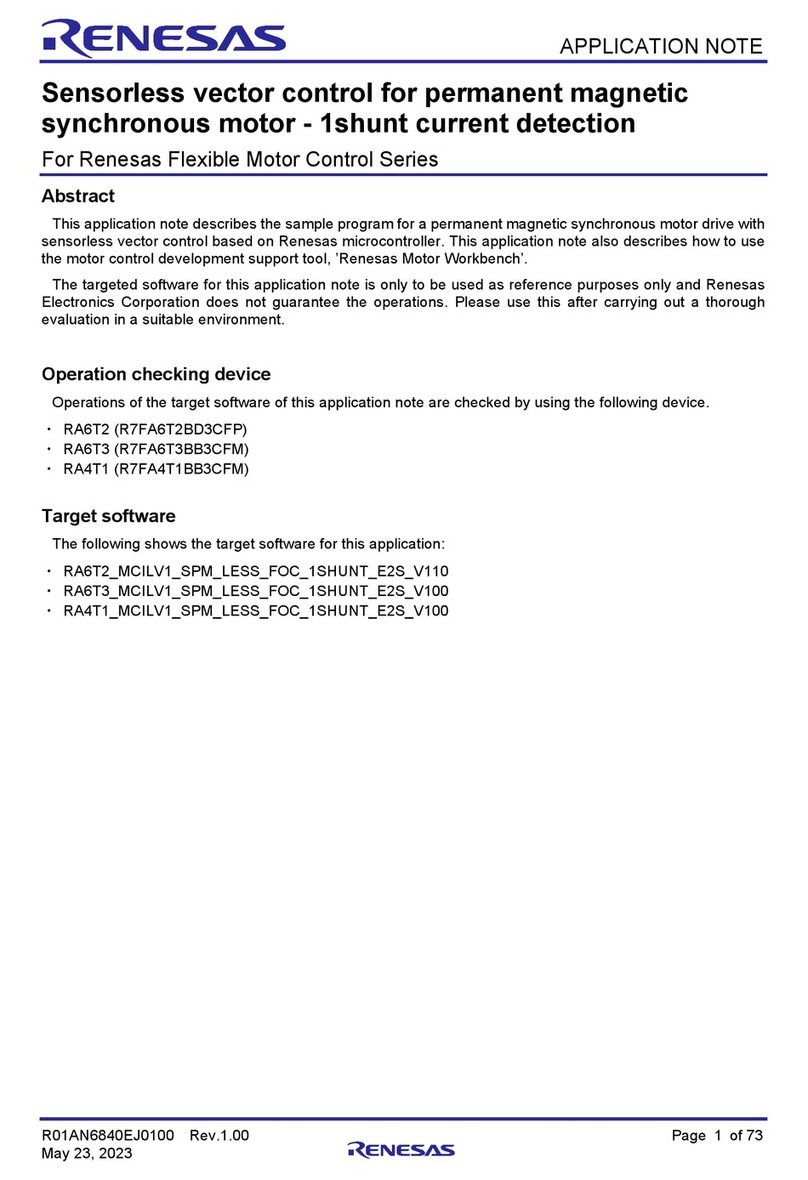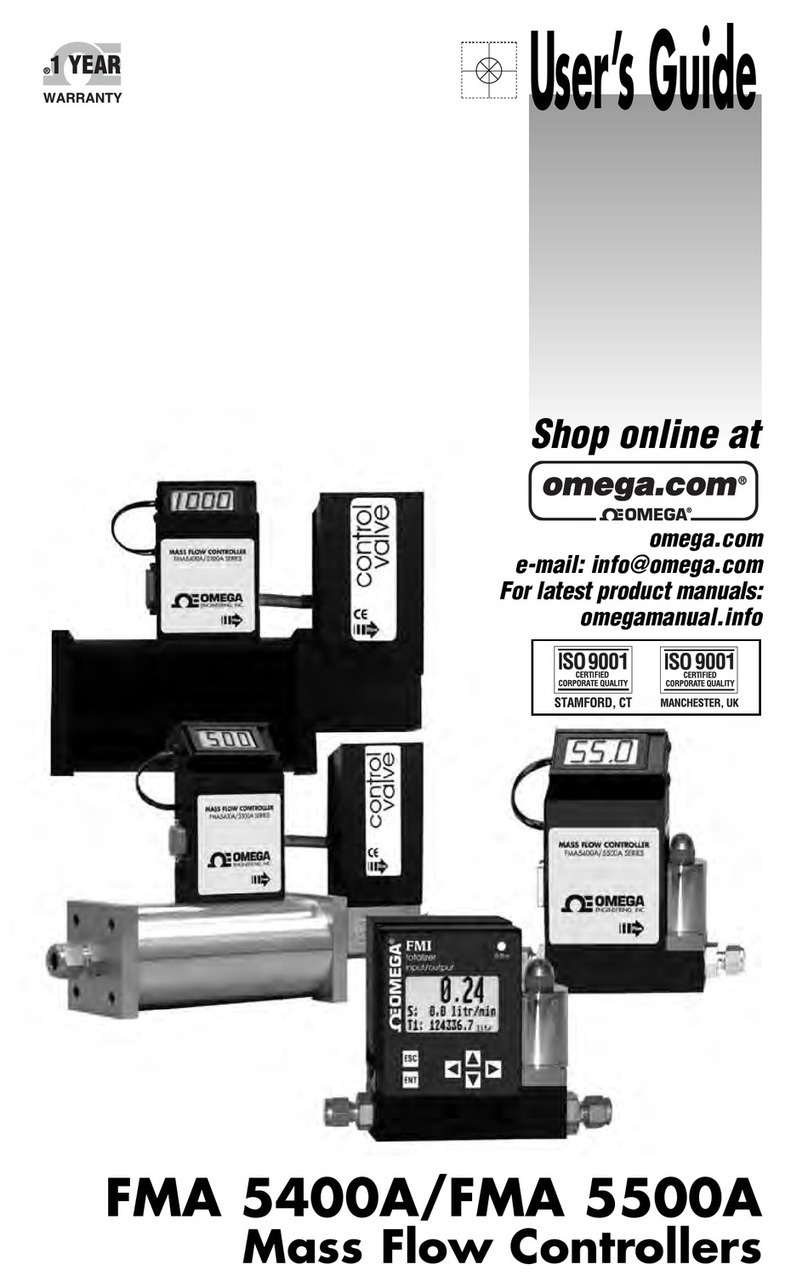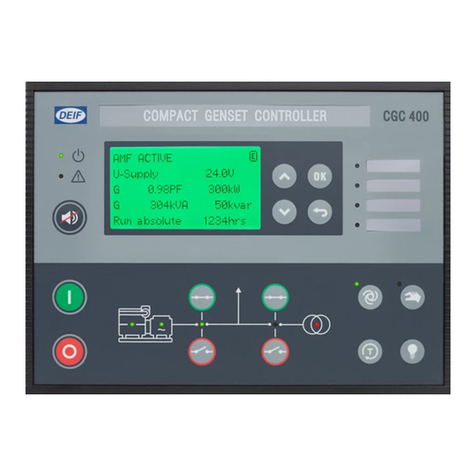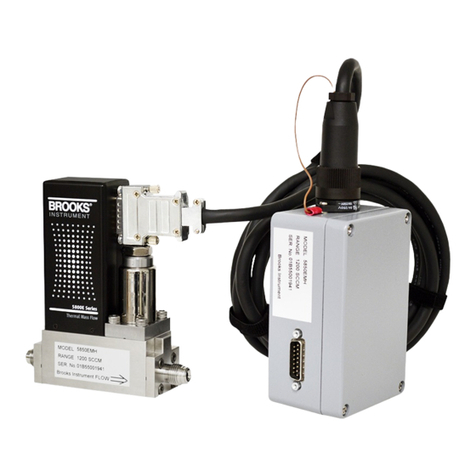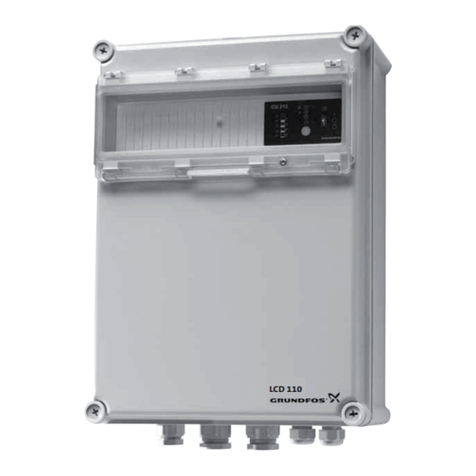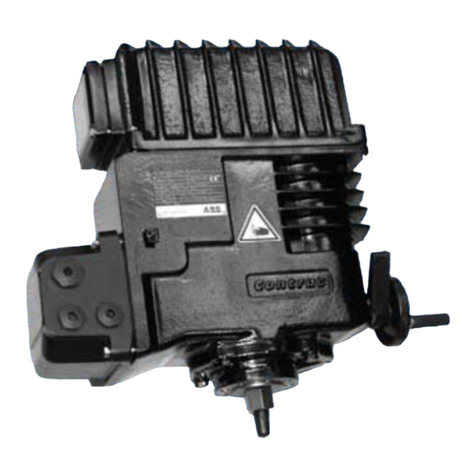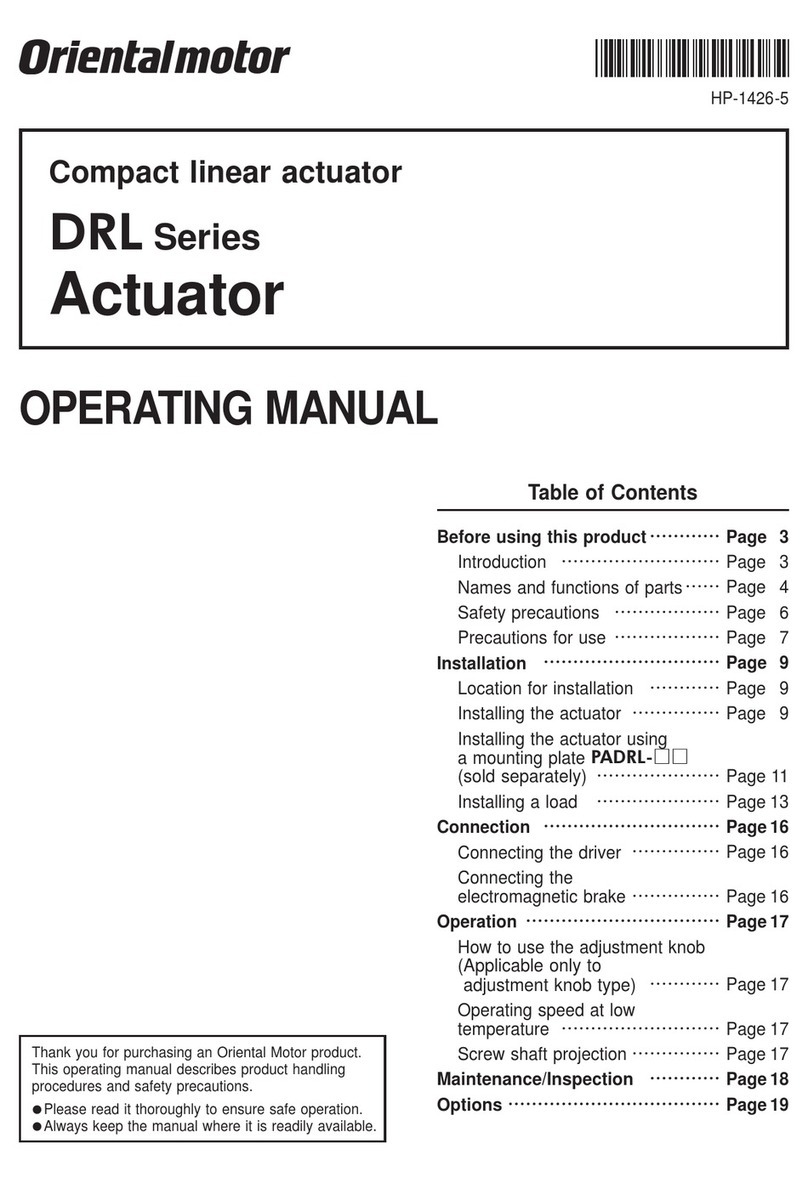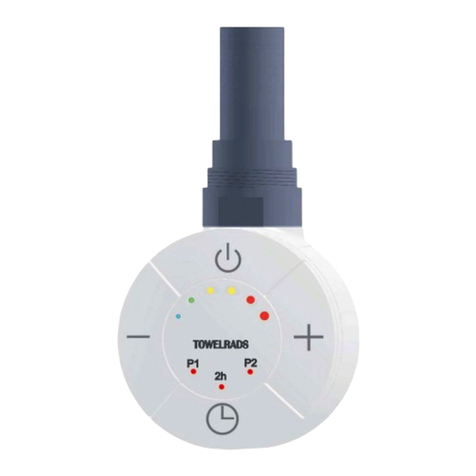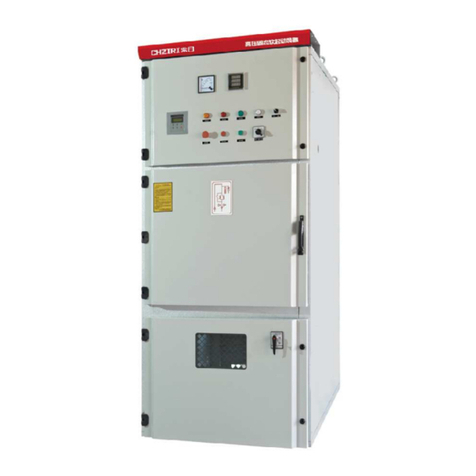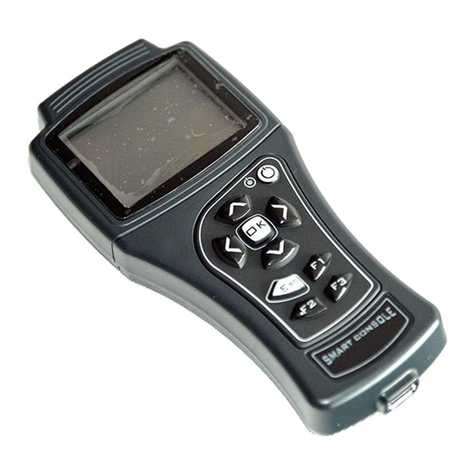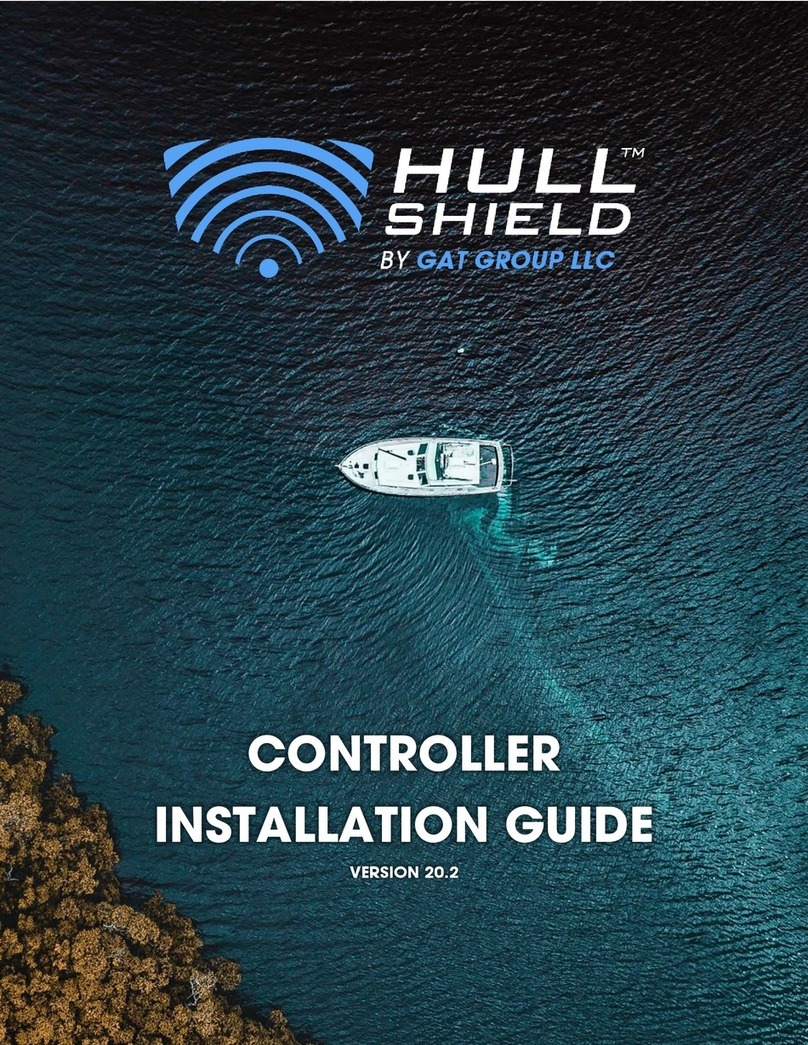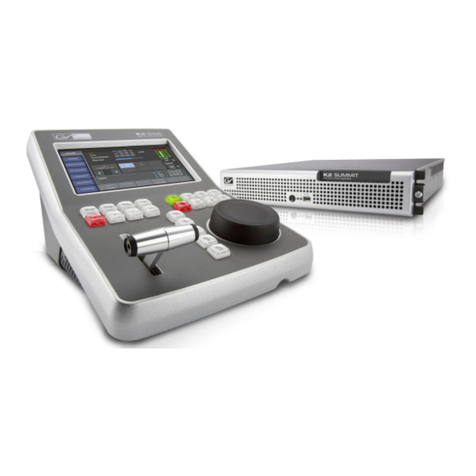Spreco S401 User manual

INSTALLATION and OPERATING INSTRUCTIONS
MPPT HYBRID BOOST CHARGE CONTROLLER

2
Please read these operating instructions carefully before using the appliance.
General information
The MPPT Hybrid BOOST charge controller is a combined wind and solar
controller with integrated micro-controller. The hybrid charge controller was
specially developed for the SHARK Edition and offers the option of connecting
additional solar modules. Heat is dissipated via the well-dimensioned housing
without a fan, which was very important to us.
Thanks to the BOOST function, even low input voltage can be transformed into
the voltage required to charge the battery, making the charging process more
effective!
Night lighting controlled by PV module voltage is also possible.
All operating parameters can be read on an LCD display. All parameters are set
using the button below the LCD display (scan button).
The SHARK wind generator supplies an unregulated three-phase alternating
current. The AC voltage is converted to DC voltage in the charge controller. For
the system voltages 12V, 24V or 48V, the appropriate regulator must be
selected for the generator. Lead-acid, gel, AGM and lithium batteries can be
charged. The appropriate final charging voltage must be set in SETUP. Please
refer to the battery manufacturer's specifications.
The charge controller has been tested.
Hazard warning:
Please note that lead-acid batteries in particular can release dangerous and
explosive gases during charging. If the charge controller is to be installed in
the vicinity of such batteries, ensure good ventilation!
Gel, AGM or lithium batteries are generally maintenance-free and do not emit
gases when charged properly.
The installation must be carried out in a dry, preferably cool place.
All work on electrical systems may only be carried out by qualified persons!

3
Table of contents:
General information ..................................................................................................................... 2
Hazard warning ......................................................................................................................... .. 2
Contents.................................................................................................................................... .. 3
1 Connection principle................................................................................................................. 4
2. Technical data ......................................................................................................................... 5
3 Charge controller overview ....................................................................................................... 5
3.1 Connections on the lower side ............................................................................................ .. 5
3.2 LCD display ........................................................................................................................... 6
3.3 SCAN button ....................................................................................................................... .. 6
4. Cable dimensioning ................................................................................................................. 7
5. Installation and connection of the charge controller ................................................................ 8
6. Temperature sensor and external stop switch ........................................................................ 9
7. Connection of solar modules ................................................................................................... 9
8. Commissioning the charge controller....................................................................................... 10
9. Setting instructions.................................................................................................................. . 11
9.1 LCD display (symbols)......................................................................................................... .. 11
9.2 Display indicators (display mode)........................................................................................... 12
9.3 Parameter settings (SET mode)............................................................................................. 14
10. Troubleshooting ..................................................................................................................... 15
11. Warranty................................................................................................................................. 16
12. Contact details........................................................................................................................ 17

4
1. Connection principles

5
2. Technical data
MPPT hybrid charge controller for wind
generator
SilentShark S401
SilentShark S601
MPPT Hybrid charge controller type
WWS04-
12-12
WWS04-
24-24
WWS04-
48-48
WWS06-
12-12
WWS06-
24-24
WWS-06-
48-48
Internal power consumption
<20mA
Battery system voltages in volts
12
24
48
12
24
48
Max. power input wind generator 3-phase
AC (at end-of-charge voltage)
450 W
500W
550W
600W
650W
700 W
Max. current input wind generator 3-
phase AC
32A
25A
12A
50A
25A
12A
Max. power input solar system
300Wp
300Wp
300Wp
150Wp
300Wp
300Wp
Max. current input solar system
20A
10A
6,25A
13A
10A
6,25A
Max. open-circuit voltage at solar input
24V
48V
96V
24V
48V
96V
Max. charging current wind/solar total
50A
35A
18,25A
63A
35A
18,25A
Max. switch-off current at the load output
2x10A
2x10A
No load
output!
2x10A
2x10A
No load
output!
End-of-charge voltages adjustable for the
battery types
Lead-acid, gel, AGM,
Lithium (according to manufacturer)
Dimensions (LxWxH) in mm
220 x 150 x 82
250x160x
95
220 x 150 x 82
Weight
2,80kg
Warranty
24 months
Ausstattung
Convection cooling (without fan)
Thermal due to aluminum housing
Cable connections at the screw terminals
Max. 20 mm2
Integrated electronic brake
- Automatically via Parameter settings
- Manual (integrated stop switch)
- Manual (with external stop switch)
Integrated manual stop switch
For maintenance etc.
Included battery temperature sensor
For temperature compensation when
charging
LCD display of all relevant operating data
W, A, V/Ah, kWh, Ah
External stop switch ( optional )
Connection to lower side socket
Environment temperature: -20~+40℃
Humidity: <=90%,no condensing.
3. Charge controller overview
3.1. Connections on the lower side
On the lower side of the charge controller are the connection terminals for the battery, 3 AC
cables for the wind generator, solar modules and the load outputs (DC output) as well as an extra
plug-in/ screw connection for the
external stop switch (on the user
side) and the temperature sensor
supplied.

6
3.2. LCD-Display
There is an LCD display on the top of the hybrid charge controller, which is used to read and set
the operating parameters.
When the SCAN button is pressed, the display is automatically illuminated for 10 seconds.
3.3. SCAN Button
The scan button is located on the top of the charge controller.
How the SCAN button works:
Press briefly to access the DISPLAY menu.
Press for 2 seconds to enter SET MODE (LCD shows "SET"),
here you can change all setting parameters. By pressing again
again for 2 seconds, you return to the DISPLAY menu
again.
By briefly pressing the SCAN button while in the display menu, all
display screens can be scrolled through one after the other. The
parameters can be changed by pressing the SCAN button in SET
MODE.
When SET mode is called up for the first time, the parameters are
changed in 0.1 increments; if you exit SET mode and reactivate it
without changing the display, the values change in 1.0 increments.
Press and hold the SCAN button for 5 seconds to activate the brake manually. BRAKE lights up
in the display.
If you press the SCAN button for 8 seconds, the system voltage (12, 24 or 48V battery system) for
which the controller is designed is briefly displayed. Immediately afterwards, the controller is
reset to the factory settings.
You can reset the parameters to the factory settings by pressing and holding the SCAN button for
10 seconds.
8888 will then appear on the LCD
display. Now release the SCAN button
and briefly press the SCAN button again
to reset the charge controller to the
factory settings.
DISPLAY Mode
SET Mode

7
4. Cable dimensioning
As shown in the connection diagram in section 1, a 3-core cable of suitable cross-section must be
laid from the SHARK Edition generator to the charge controller. DC charging current flows from
the charge controller to the batteries via 2 cables. The cross-section of the 2-pole battery cable
should be slightly larger. We recommend here a minimum cross-section of 10mm2. Please
remember to install a fuse (60A) near the battery.
Please refer to the following tables for the recommended cable cross-section:
System voltage 12 Volt:
Distance from wind generator to
charge controller in m
0 - 9
10 – 19
20 – 29
30 – 44
45 – 69
70 – 110
Cable cross-section in mm2
AWG
6
10
10
8
16
6
25
4
35
2
50
1
Distance from charge controller
to the battery in m
0 - 9
10 – 19
20 – 29
30 – 44
45 – 69
70 – 110
Cable cross-section in mm2
AWG
10
8
16
6
25
4
35
2
---
---
---
---
System voltage 24 Volt:
Distance from wind generator to
charge controller in m
0 - 10
11 – 19
20 – 29
30 – 44
45 – 69
70 – 110
Cable cross-section in mm2
AWG
2.5
14
4
12
6
10
10
8
16
6
25
4
Distance from charge controller
to the battery in m
0 - 9
10 – 19
20 – 29
30 – 44
45 – 69
70 – 110
Cable cross-section in mm2
AWG
10
8
16
6
25
4
35
2
---
---
---
---
System voltage 48 Volt:
Distance from wind generator to
charge controller /Inverter in m
0 - 29
30 – 79
80 – 99
100 – 150
Cable cross-section in mm2
AWG
2.5
14
4
12
6
10
10
8
Distance from the charge
controller/inverter to the battery in m
0 – 29
30 – 69
70 – 99
100 – 150
Cable cross-section in mm2
AWG
4
12
6
10
10
8
16
6

8
We recommend the use of tinned silicone cable. With this cable, there is no oxidation of the
individual copper wires.
5. Installing and connecting the charge controller
The charge controller should be installed as close as possible to the battery in a ventilated and
cool room so that it is possible to read the LCD display and operate the manual brake switch. The
charge controller must be mounted vertically for effective cooling. (connections at the bottom).
The charge controller must never be installed in direct sunlight.
Safety note:
As wet batteries in particular (open lead-acid batteries) can emit gases during operation, the
charge controller must not be installed in the vicinity of the batteries. If the charging voltage is
too high, there is a risk of explosion due to sparking in such areas!
Please observe the relevant safety instructions from the battery manufacturer during installation. If
maintenance-free batteries are used, the charge controller can be installed directly next to the
batteries.
A sketch of the connection diagram can be found in section 1 of these operating instructions.
Secure the connection cables so that they cannot come loose.
Please tighten the screws sufficiently!
We recommend using wire end ferrules to attach your cables directly to the charge controller.
Once the wire end ferrules have been securely connected (crimped) to the insulated cables, they
can be connected to the screw terminals.
When connecting the charge controller, it is important that the battery is first connected to
the charge controller with the correct polarity!
The "+" battery cable should be connected via a 60 amp fuse or larger, which should be mounted
as close as possible to the battery (circuit breaker).
Caution!
Please observe the polarity of the battery connection. Mixing up plus and minus can result in the
charge controller being destroyed! This will invalidate the warranty.

9
After connecting the battery, the wind generator and, if necessary, a solar system can be
connected. Furthermore, two separate loads with max. 10A each can be connected to the load
output (DC output). If two loads are connected, they have a common + pole.
If there is sufficient wind when the SHARK Edition is connected, it will immediately build up
voltage at the 3 cable ends if the charge controller is not connected. We therefore recommend
manually blocking the wind generator (before it is connected to the controller!) (e.g. tying a rotor
blade with a line). The three AC cables coming from the wind generator are connected to the
lower side of the charge controller (see section 3.1).
The sequence / polarity is irrelevant for three-phase alternating current.
If you also want to connect a solar module to the hybrid charge controller, this is possible via the
"solar input" connection terminals. The solar power must not exceed the maximum value of
300Wp (exception charge controller WWS06-12-12 here only 150Wp!).
Please pay attention to the correct polarity when connecting.
Possible connection diagrams can be found in section 7.
6. Temperature sensor and external stop switch
The temperature sensor for the battery and the two cables (gray and white) for the external stop
switch are located on the supplied wiring harness with plug-in screw connection (see page 6
photo). Function of the external stop switch: Closed brake ON, (red control LED "Dump" lights
up), open brake OFF
Attention!
NEVER connect the enclosed wiring harness to a live part. This would immediately destroy the
charge controller. During installation, also ensure that free cable ends cannot come into contact
with live parts! This would destroy the controller and void the warranty!
If required, the temperature sensor cable can be extended by the user up to a maximum of 250 cm.
The gray and white cables for the external stop switch can be extended by the user up to a
maximum of 1000 cm.
7. Connecting solar modules
The Boost charge controller is an MPPT wind / solar hybrid charge controller.
You can see some possible connection diagrams in the following illustrations.
It is essential to observe the maximum permissible connected loads
(p. 5, Technical data), Wp, A, open-circuit voltage V.

10
System voltage 12V:
System voltage 24V:
8. Adjusting the charge controller
Before commissioning, the charge controller must be set to the permissible end-of-charge
voltage according to the battery manufacturer and, if necessary, to your personal application (see
section 9, Setting instructions). The basic settings are preset at the factory for the respective
system voltage.
Factory default setting e.g. for a 12V system:
End of charge voltage 14,4V
Max. Current 32A
Start of charging for boost system 3V
Braking time 10Min.
You must at least change the end-of-charge voltage according to the battery manufacturer's
specifications in the menu item "End Of Charge Voltage" in section 9.3.
Once the set end-of-charge voltage has been reached, the wind generator is braked by the
controller for at least 10 minutes.
The wind generator is then released again and braked again if necessary.

11
Note
If the batteries are too small (less than 100Ah), but also in the case of aged batteries with a loss of
capacity, it can happen that the end-of-charge voltage is reached very quickly. The wind generator
is then slowed down even though the battery has not yet been fully charged. This can be remedied
by connecting a switched-on consumer to the battery during charging. This reduces the voltage
and prevents braking.
9. Setting instructions
9.1 LCD Display (Symbols)
Related to
Icon
Status
Wind
generator
Shows normal operation when turning
BRAKE
Brake activated
(Only lights up if the brake has been activated by parameter settings or
internal stop switch)
Solar
Solar modules supply electricity
Night mode or no solar module connected
Battery
Charge
Battery fully charged.
Flashing - overvoltage.
Battery empty
Flashing - undervoltage
Load
Output normal.
No output. Flashes on overload
Flashing - means short circuit

12
Related to
Icon
Status
Load output
Control
mode
Light Control on/off.
Light Control on, time Control off.
(Only relevant for controlling streetlights)
Light control on voltage.
If "ON" & "LOAD" appears, Load output is switched on.
Light control off voltage.
Displays "OFF" and the time. The time displayed is the switch-on time
(Only relevant when controlling streetlights)
Indication of which load output is displayed
Others
Parameter Symbol
“SET”
Parameter setting. When this is displayed, parameters can be set by
clicking the SCAN button.
Red LED lamp
„Dump“
If the charge controller is in braking mode, the indicator lamp lights up
red. The light does not light up when everything is working normally.
9.2 Display indications (display mode)
The displays in display mode are scrolled through by briefly pressing the scan button.
You can switch to SET mode by pressing the Scan button for 2 seconds. Attention: SET mode is
not available for all display screens!
For further details, see 9.3 Parameter settings.

Display indicators, display mode
Battery display
voltage
(Start screen)
Temperature display
Temperature sensor
Display of watt
hours consumed at
the load output
Wind generator
voltage
Display of total solar
energy output in Wh
Wind generator
current
Display of total wind
energy output in Wh
Wind generator
power
PV control voltage
for switched load
output "Off" (2)
PV voltage
PV control voltage
for switched load
output "On" (1)
PV current
Optional: depending
on the settings in
the previous screen
PV power
Load 2 output mode
Load 1 current
Optional: depending
on the settings in
the previous screen
Load 2 current
(1) If the voltage at the PV module falls to or below this value, the
relevant load output is switched on (night).
(2) If the voltage at the PV module rises to or above this value, the
relevant load output is switched off (day).
To do this, "Output mode v1" must be selected in SET mode on the
relevant load output!
In this way, automatic anchorage lighting can be realized, for
example.
Load 1 output mode

14
9.3 Parameter settings (SET mode)
NOTE - The load outputs parameter settings only work if a solar module is connected to the
charge controller.
Below is the table for the recommended settings. Observe the specifications of the battery
manufacturer!
values
12V
24V
48V
End of charge voltage
14,4V
28,8V
57,6V
Load output overvoltage
protection
16V
32V
64V
Boost process
2V
4V
10V
Charging current wind max.
see technical data
Undervoltage Switch Off
10,8V
21,6V
X
Undervoltage Recovery On
12V
24V
X
Solar Switch Off load output
1,5V
3V
X
Solar Switch On load output
1V
2V
X
Setting
Navigate to.... in the
display menu
Press the SCAN button for 2 seconds to
enter SET mode.
Set the desired values!
Exit SET mode by pressing the SCAN button
for 2 seconds.
End of charge
voltage
Overvoltage
protection
Load output
Charging current
Max.
Please do not
change!!!
Internal controller
settings!

15
Start Boost
procedure
Undervoltage
switch-off
Load output
Undervoltage
recovery
Load output
7 output control
modes
Load output
(*)
(*) The output control mode settings are mainly required for controlling street lighting.
Possible useful settings: v1 for PV voltage-controlled load output (night lighting),
v5 for load output permanently on and v6 for load output permanently off.
10. Troubleshooting
The SHARK only turns slowly
–The manual brake on the charge controller is set to "BRAKE". - A short circuit may have
occurred between the wires when connecting the AC cables in the mast.
–Automatic brake is activated because the parameter settings have been exceeded.
–There is too little wind.
To find the fault, please proceed as follows: Disconnect the three wires to the wind generator on
the charge controller. If the SHARK now starts up (CAUTION: voltage builds up on the cables),
then the fault is between the charge controller and the battery. If the SHARK is still turning
slowly, the fault is between the charge controller and the wind generator. Pay attention to the
recommended cable cross-section and the recommended minimum capacity of the battery to be
charged.

16
The SHARK delivers too little power
The wind speed is too low (see SHARK performance diagram)
Note: The wind speed measured at the top of the mast is lower at the mounting height of the
wind generator!
Turbulence caused by obstacles in the direction of the wind or location for stationary use is
not well chosen, mast may be too short.
The cable cross-section does not match the installed cable length. This results in heat loss in
the cable.
The screw terminals are not tightened.
The existing battery capacity is too low, so that the end-of-charge voltage is reached too
quickly (the battery should have at least 100 Ah).
The existing battery is too old or has lost capacity due to deep discharge, so that the final
charging voltage is reached too quickly.
11. Warranty
Spreco (Thailand) Co., Ltd. warrants that all equipment sold by it will be free from defects in
material and workmanship for the warranty period from the date of purchase.
The following warranty periods shall apply:
MPPT hybrid charge controller BOOST - 24 months
If during this period the appliance is found to be defective due to faulty materials or
workmanship, Spreco (Thailand) Co, Ltd. will repair the appliance or replace the appliance itself
or defective parts in accordance with the following terms and conditions, without charging labor
and material costs.
Warranty services will only be provided if the warranty certificate in the appendix to these
installation instructions is completed in full and the original invoice from the dealer is presented.
The warranty does not cover: Regular inspections, maintenance, or repair or replacement of
parts due to normal wear and tear.
Transportation, freight costs and freight risks directly or indirectly related to this appliance
warranty.
Travel expenses to and from the repair center, troubleshooting, diagnostics and repair work.
Damage caused by misuse and abuse of the device.
Damage caused by force majeure or other causes for which Spreco (Thailand) Co., Ltd. is not
responsible, in particular lightning, flooding, snow load, fire, hurricane, etc., shall be excluded.
If the delivery item has to be dismantled under warranty and reassembled after repair or
replacement, dismantling and reassembly costs shall be borne by the company. Spreco (Thailand)
Co,. Ltd. shall not be assumed.
Spreco (Thailand) Co, Ltd. alone shall decide whether repair or replacement is appropriate or
necessary. If neither repair nor new delivery is possible, the customer is only entitled to withdraw
from the contract.

17
Unless otherwise provided by mandatory law, the buyer's claims against Spreco (Thailand) Co.,
Ltd. are limited to these warranty provisions, and neither Spreco (Thailand) Co., Ltd. nor the
distributors of the products assume any further liability for direct or indirect damages.
Name
Adress
Date of purchase
Charge controller Boost
Series no.
Dealer
Dealer address
12. Contact details
www.sprecowindgenerators.com
SPRECO (Thailand) Co., Ltd.,
137/2 Thuwang Road, Moo 5, T. Pawong, M Songkhla
90100 Songkhla / Thailand
Phone +66 (0)94 587 2899
Mail: [email protected]
time zone UTC +7 !
Please contact us by e-mail if possible!
We will get back to you as soon as possible!
Thank you very much!
A Thai Company Ltd under german managemant
Copyright Spreco (Thailand) Co.,Ltd.
This manual suits for next models
7
Table of contents
